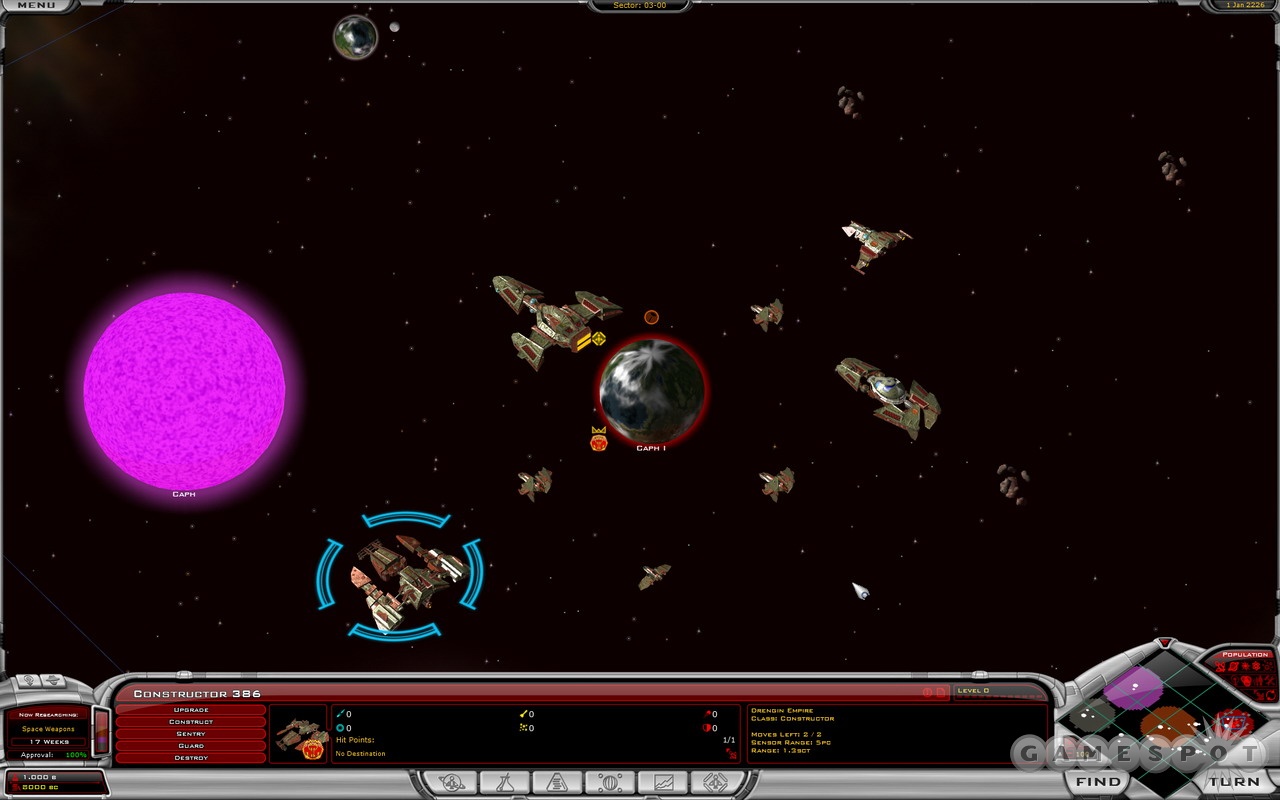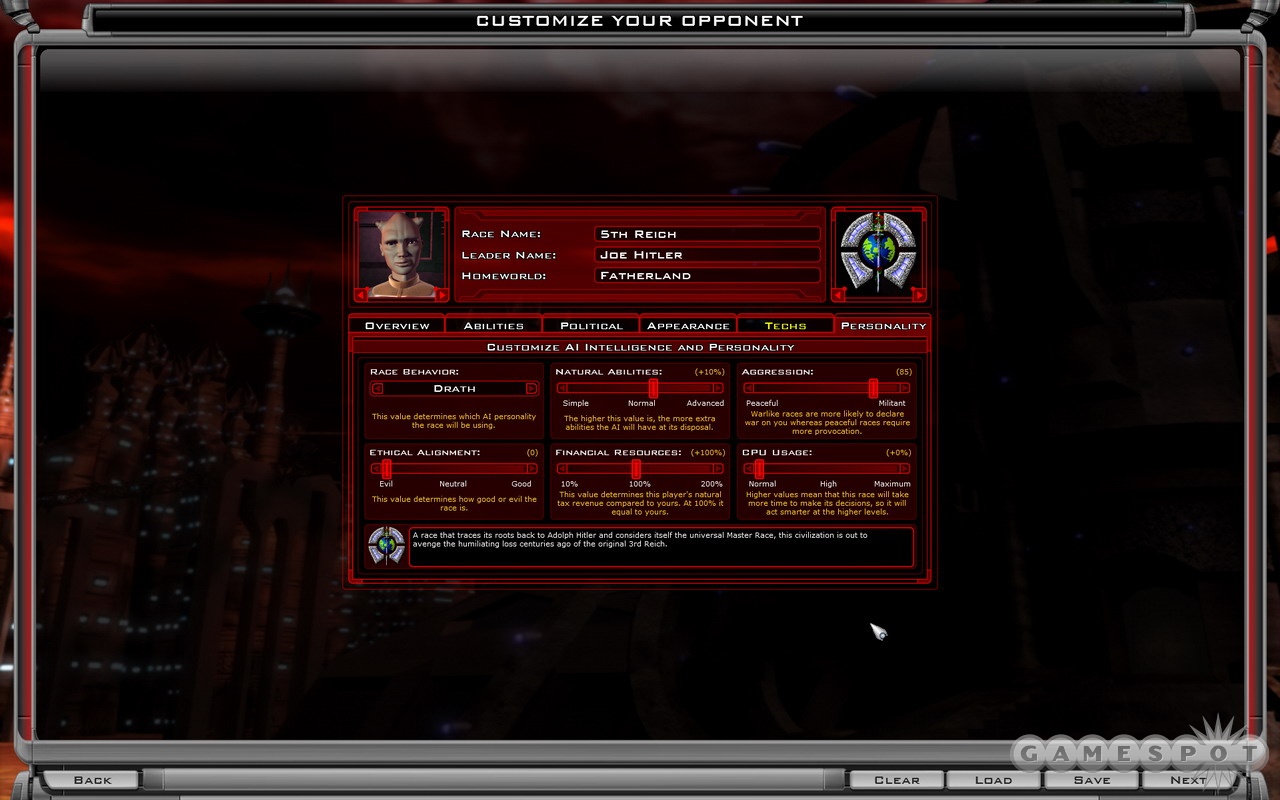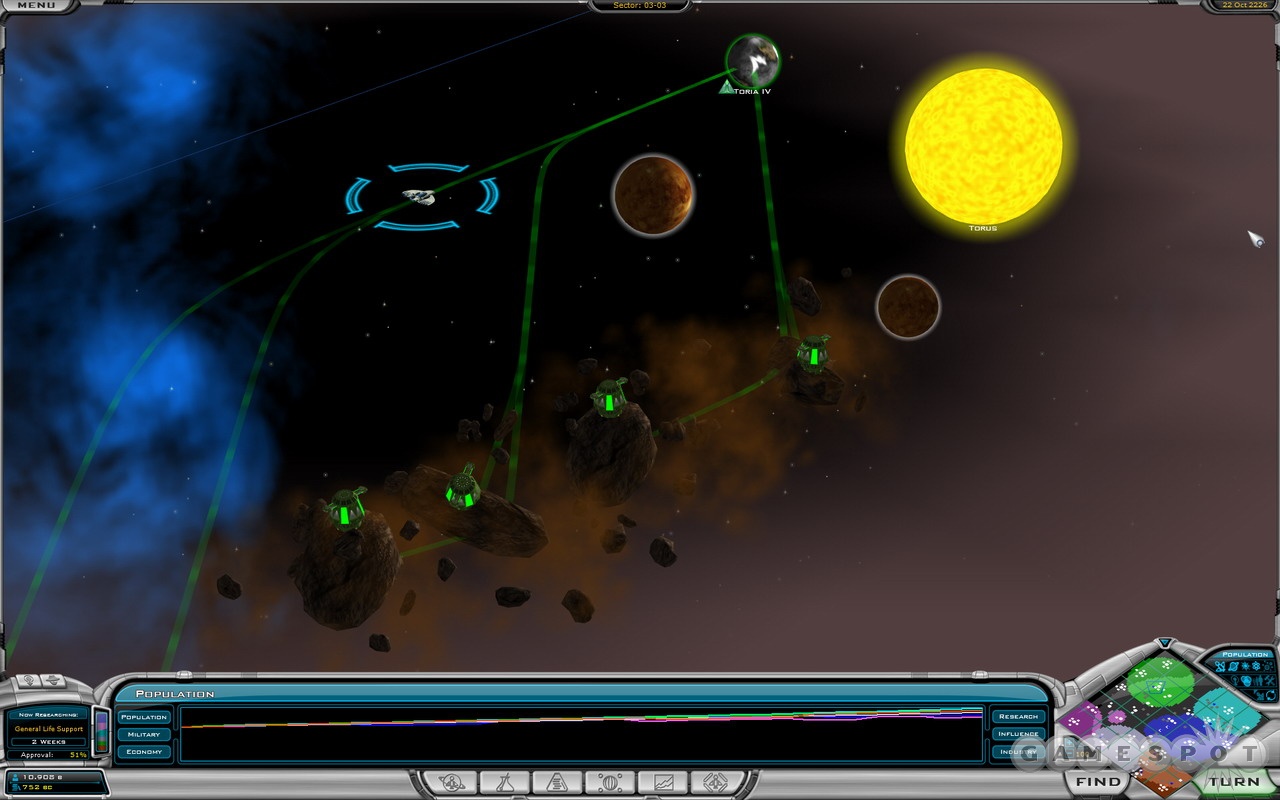Galactic Civilizations II: Dread Lords was on most strategy-game-of-the-year awards lists in 2006, garnering praise from many as the best space-based "4X" (exploring, expanding, exploiting, exterminating) game ever released for the PC. That's a tough act to follow, yet somehow Stardock has managed to produce an add-on package that elevates the game to an even higher level of strategy gaming excellence. Dark Avatar accomplishes this via subtle tweaks in a wide range of existing features combined with some totally new elements that significantly expand the depth and breadth of an already excellent game.

Many of the improvements can be termed "minor," yet they have a significant impact. The graphics in Dread Lords were fine, but Dark Avatar improves the quality of the visuals in just about every aspect of the game. The ships in particular are noticeably more detailed, and a slew of new parts in the ship designer provide you with the ability to reproduce anything from the U.S.S. Enterprise to a flying milk truck. Users have already posted some incredible home-brew ships on the Internet. Weapon effects and resulting explosions have also been improved. The technology-tree interface has undergone a graphics face-lift that results in a much easier-to-use presentation of the branching technology pathways, although it can still take a little work to determine precisely what techs are required to build a certain type of ship. These and many other tweaks and improvements on existing features are what you might expect in an add-on to an already superb game.
But Dark Avatar introduces some completely new features that create fresh challenges and options. One of the most profound changes is the nature of planets. In Dread Lords, all planets could be colonized by every civilization, which resulted in an early game rush to grab every planet possible, with an emphasis on the richest worlds. The best strategy was always to focus on being first to the planets. Dark Avatar's universe is more realistically hostile, with planets having a variety of environments, many of them uninhabitable to most civilizations unless they either natively possess the capability to prosper in that environment or spend the considerable time and resources to develop the technology to render the world livable. Planets exhibit a wide variety of environments; thus, your choice of what to research is critical: You may spend weeks developing the capability to tame a radioactive world, only to find that there is only one radioactive planet but three prime planets that require aquatic capabilities. If you're a civilization with the native ability to populate a certain type of hostile planet, you'll have to debate the value of trading that valuable capability against keeping it to yourself. Building a civilization of planets is a much more complex and challenging undertaking than in Dread Lords.

Espionage now requires you to develop agents, which takes time and money. Once you have an active agent, you can place it on an opponent's planet and foil your opponent's attempts to build planetary upgrades at the same time that your agent gathers intelligence. You will also need agents to engage in counterespionage to nullify enemy agents placed on your planets. This results in little cat-and-mouse games as you and your foes try to spy on each other as long as possible before your agents are caught and eliminated. Unfortunately, there don't appear to be any negative consequence to having an agent caught spying; we never received any messages from an opposing civilization protesting our espionage on its planet.
Two more major additions are superabilities, which are native to specific races, and mega-events, which are unpredictable events that can have a galaxywide impact. Superabilities give each race a more distinct feel and require that you take each race's unique capabilities into account as you deal with them. For example, if you attack a race with the superorganizer ability, you'll find that every race of the same ethical alignment will come to its aid. If you play as the Drath, with their supermanipulator ability, you will be able to more easily get other races to go to war against each other. Superdiplomat races can cut much better deals with other civilizations than normal races. Mega-events typically change the overall balance of the galaxy, with such events as universal plagues, civil wars, outbreaks of pirates, and much more. Mega-events can completely change the course of the game, which can be a blessing or a curse, depending upon how well you're doing. Both superabilities and mega-events have a profound impact on the game; thus, in the ''have it your way'' philosophy of Galactic Civilizations II, both can be toggled on or off.
The customizability and respect that the game shows you by allowing every aspect to be toggled, tweaked, or, in some cases, completely modified, have been beefed up even more in Dark Avatar. Now you can play as any race (and two new races have been included), and you can design a completely new race. You can tailor every aspect of the new race, from how it thinks, what its priorities are, and its abilities, to its appearance and custom ship styles. Want to play against the Borg? Or would you rather play as Hitler's great-great-great-great grandson? You can design them into the game. An enterprising user has already designed a Shodan opponent (the evil entity from the classic System Shock). The possibilities are practically endless.
Speaking of new races, the new campaign is built around a very interesting premise. It's the bad guys against the really bad guys. The Drengin Empire has always represented evil in the Galactic Civilizations II universe, but now a clan within the Drengin, the Korath, has begun to break away and impose its own will on the galaxy. While the Drengin are content to merely enslave everyone that they can conquer, the Korath are happy with nothing less than complete extermination. In addition, there is something even more sinister occurring within the Korath race. Your role, as the commander of the Drengin, is to unravel the mystery of what is going on within this renegade race and prevent it from exterminating all of those potential slaves. The campaign is very well designed, as well as a good way for beginners to start and learn the mechanics of the game while being drawn into an engrossing drama.

The artificial intelligence has always been a highlight of Galactic Civilizations II, so it is downright scary that it has been further refined and improved in Dark Avatar. It was already intelligent enough to make you feel as if you were playing against human players rather than hard-coded AI. So the improvements are subtle, such as how well your opponents design their ships for particular situations and how they handle negotiations in technology trading. Speaking of race negotiations, you now have the option of establishing research and economic treaties. These can be unilateral or bilateral treaties. Diplomacy is still a bit simple when compared to Space Empires V, but it's extremely well designed.
Dark Avatar is technically a "mere" expansion to Galactic Civilizations II: Dread Lords, but the added features are so profound that it feels like a new and even better game. The incredible range of options and now the ability to create completely new races ensure that you can create any type of game that you happen to be in the mood for, from a race between reasonable civilizations in a tiny galaxy to an epic space opera between good and evil in a massive universe, with a mythos made of stock races or customized to create Kirk's U.S.S. Enterprise versus Darth Vader. If you had any doubt about whether Galactic Civilizations II was the best 4X space game on the PC, Dark Avatar will crush those doubts like the Korath wiping the last vestiges of life from a helpless planet. This is a must-buy for any owner of Dread Lords and highly recommended for any strategy gaming fan.